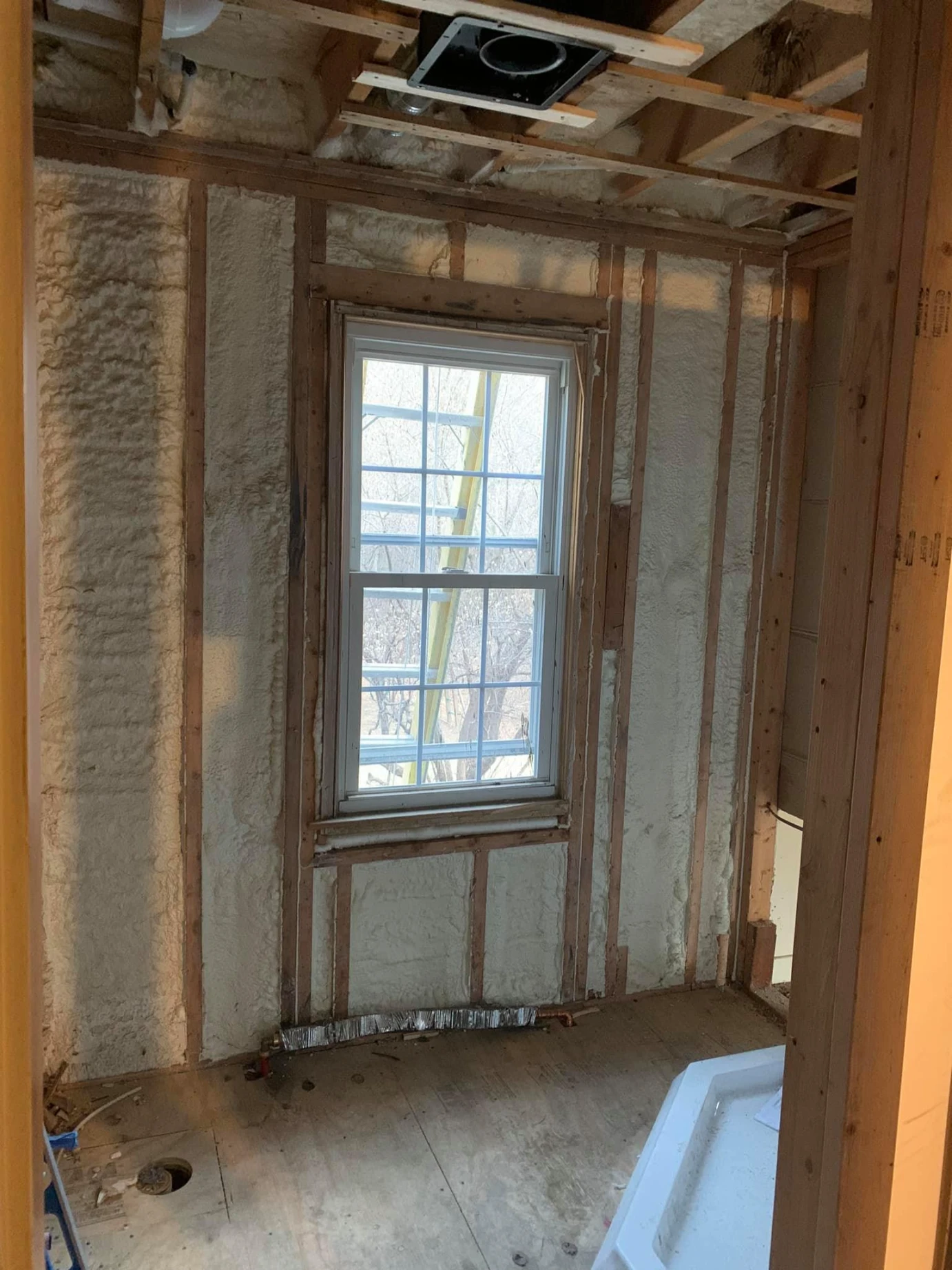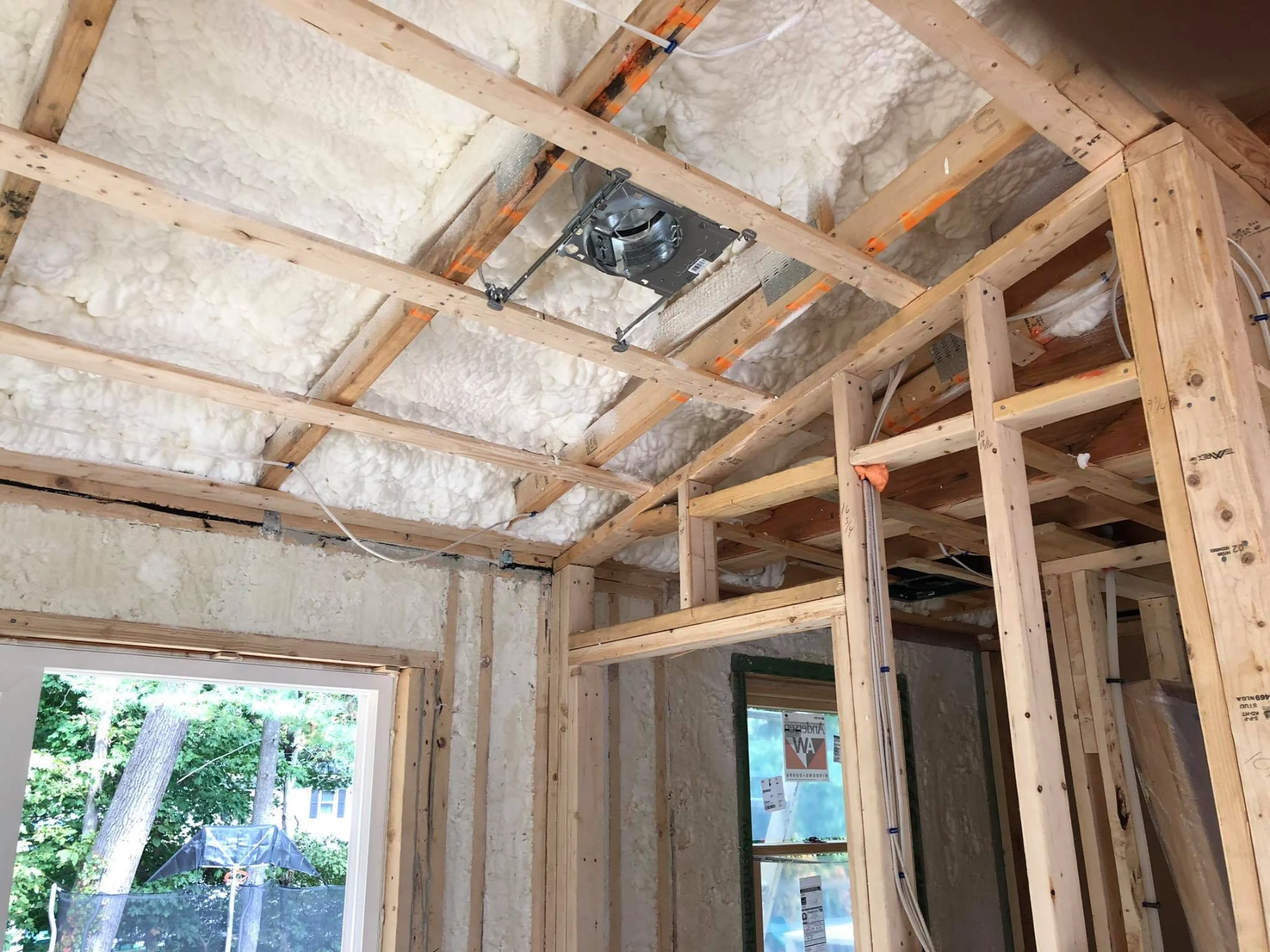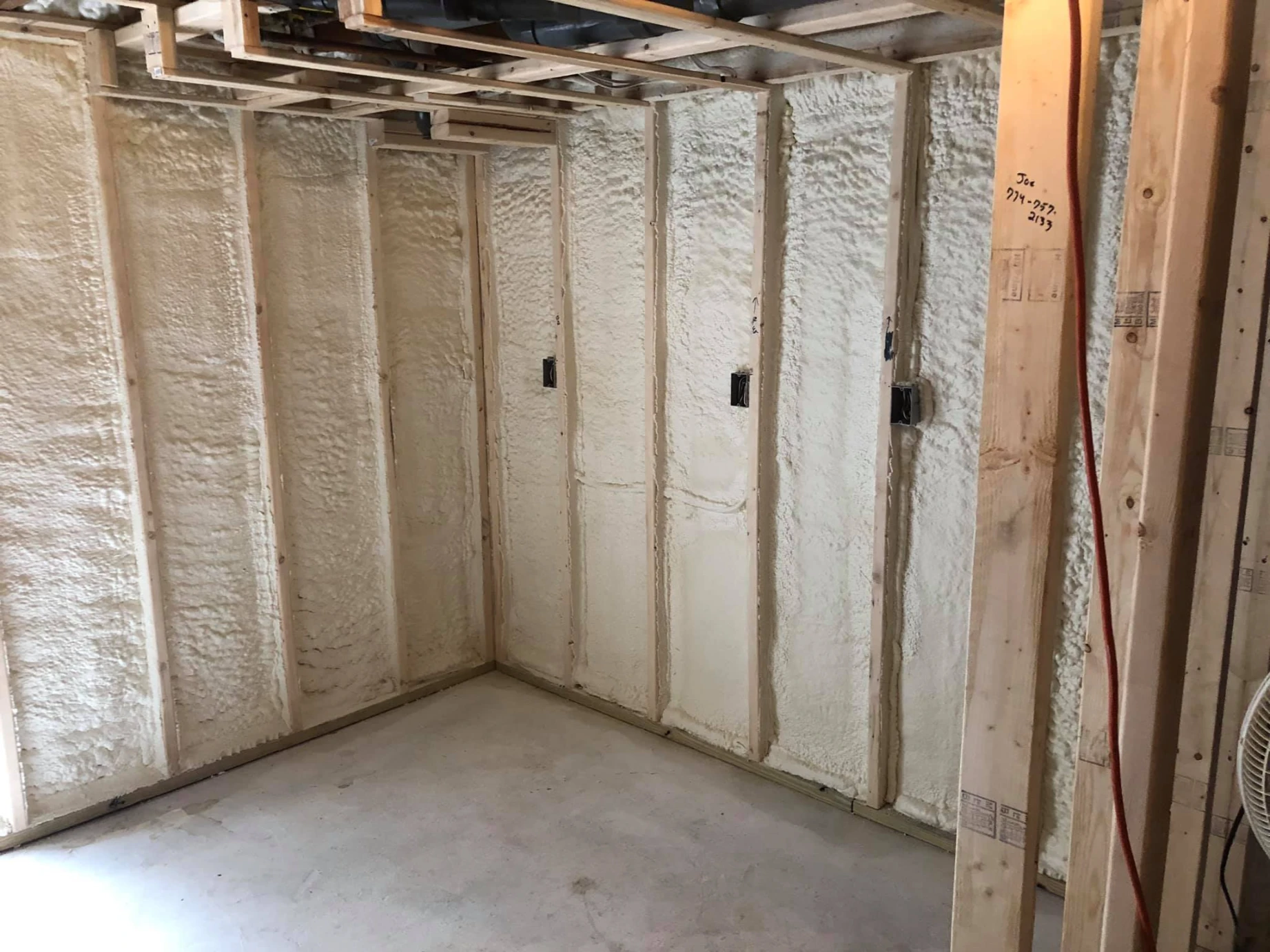
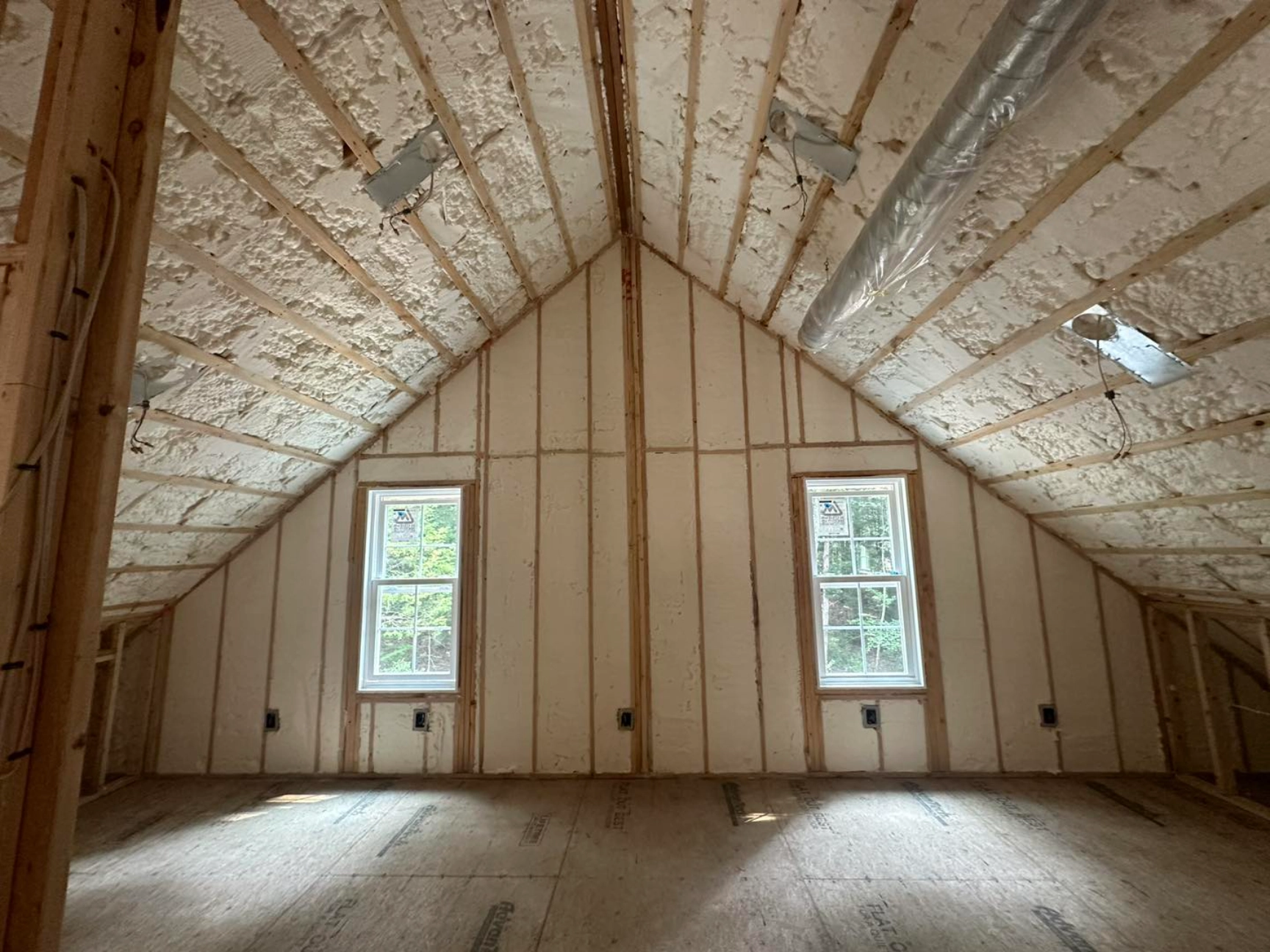
Spray foam insulation provides a continuous, air-tight barrier that performs significantly better than traditional materials such as fiberglass batts or blown-in cellulose. Unlike conventional methods that leave gaps around framing, pipes, and wiring, spray foam expands on contact to fill every void. This direct application prevents unwanted air exchange, reducing heat loss and moisture infiltration.
For buildings in the Northeast, including Massachusetts, this airtight seal is critical. Seasonal temperature swings and high humidity levels increase the risk of condensation, mold, and energy loss. Lamothe Spray Foam Insulation has extensive experience applying spray foam across a wide range of construction types, including retrofits, new builds, and remodels, with proven improvements in energy performance and indoor comfort.
Traditional materials are often compromised at joints, electrical penetrations, and framing intersections. Even tightly installed fiberglass leaves air paths. Spray foam creates a unified barrier that eliminates these weak points.
| Feature | Spray Foam (Open/Closed Cell) | Fiberglass Batts | Blown-In Cellulose |
|---|---|---|---|
| Air Leakage Reduction (%) | 90-95% | 25-35% | 40-50% |
| Sealing at Framing & Gaps | Full Coverage | Poor | Moderate |
| Moisture Barrier Capability | High (Closed-Cell) | None | Low |
| Application Consistency | Uniform | Depends on Fit | Varies by Installer |
| Durability Over Time | 20+ Years | 5-10 Years | 10-15 Years |
| Thermal Bridging Resistance | High | Low | Moderate |
Source: U.S. Department of Energy, Building Science Corporation
| Specification | Open-Cell Spray Foam | Closed-Cell Spray Foam | Fiberglass Batts | Blown-In Cellulose |
|---|---|---|---|---|
| R-Value per Inch | 3.5 – 3.7 | 6.0 – 7.0 | 3.2 – 3.8 | 3.2 – 3.8 |
| Air Impermeability | Yes | Yes | No | Partial |
| Vapor Retarder | No | Yes | No | No |
| Expansion to Seal Gaps | Yes | Yes | No | No |
| Structural Rigidity Contribution | Low | Moderate | None | None |
Source: Building Performance Institute, 2024 Guide
In homes with complex framing or irregular cavities, spray foam consistently prevents hidden air leaks that traditional materials miss entirely.
In Massachusetts, older homes often have balloon framing and multiple air pathways between floors. Retrofitting with spray foam insulation stops uncontrolled airflow through framing voids, attic bypasses, and rim joists. Traditional methods often fail here because they require full cavity access and leave perimeter gaps.
Modern homes using open-cell foam in interior walls also benefit from reduced sound transmission while achieving airtight insulation. Closed-cell variants offer added rigidity and moisture protection in basements and crawlspaces.
When applied in rim joists and attic kneewalls, spray foam insulation delivers up to 30% HVAC load reduction based on blower door testing data.
Plan spray foam insulation installation in coordination with HVAC upgrades to optimize sizing and airflow balance.
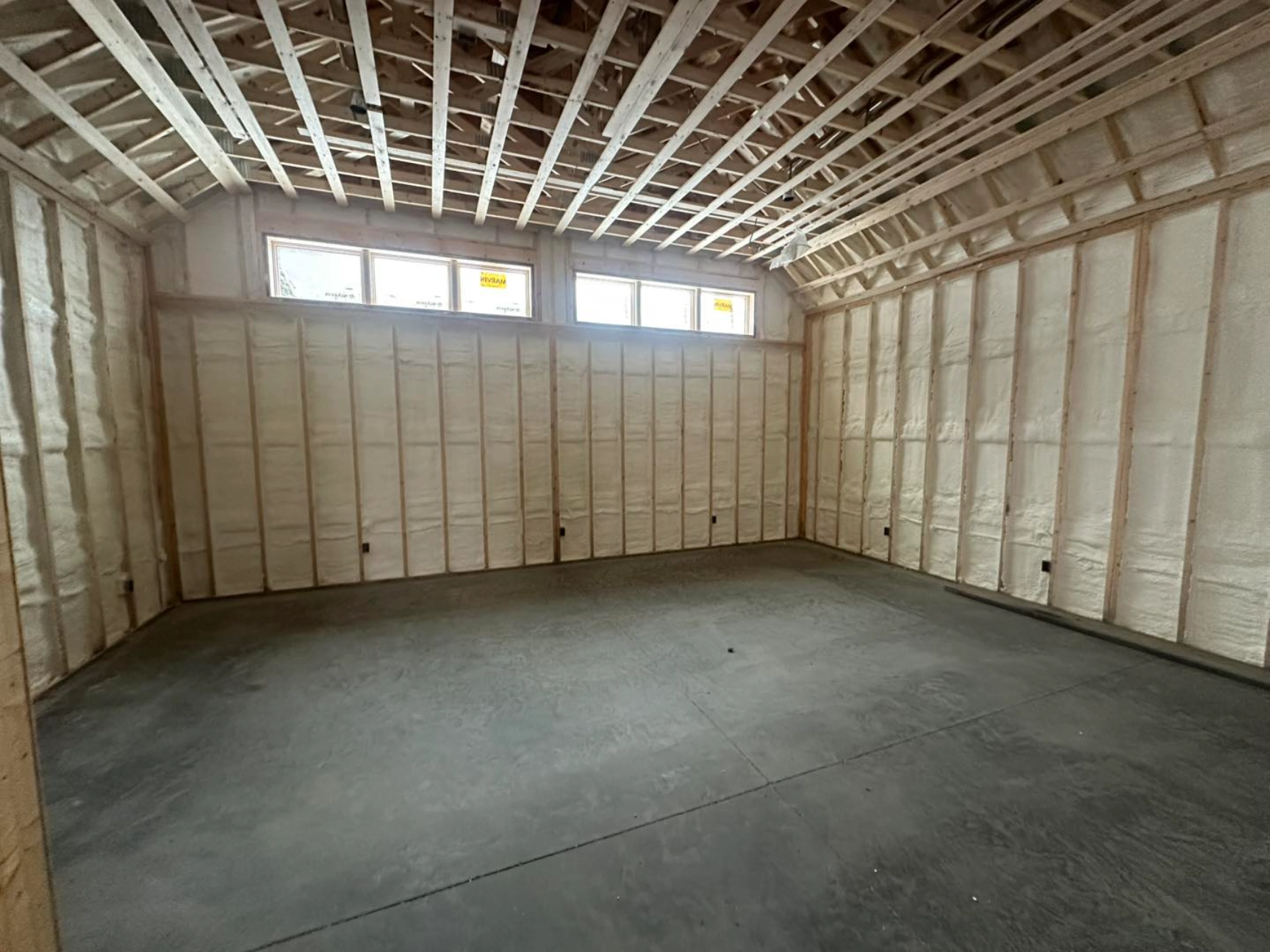
Spray foam lasts over 20 years without degradation when properly applied. It adheres permanently to substrates and resists moisture and pests.
No. Old insulation must be removed for foam to fully bond and seal. Retaining old layers reduces effectiveness and may trap moisture.
Yes. Over-insulation without ventilation adjustments can lead to trapped moisture and stale air. Always balance air-sealing with ventilation planning.
Closed-cell foam adds some rigidity to walls and ceilings, which can improve durability in storm-prone or high-wind areas.
Spray foam insulation creates a complete air seal that traditional methods fail to achieve. The expansion on contact, high R-values, and moisture resistance make it a preferred solution for energy efficiency and air quality. For homes and buildings across Massachusetts, spray foam is a durable method to minimize air leaks and lower utility costs.
To learn more about how spray foam insulation can address air leaks in your home or building, contact Lamothe Spray Foam Insulation at (508) 847-0119 or email [email protected]. Expert consultation ensures the right product is matched to your building’s needs, environment, and long-term performance goals.
Discover how Lamothe Spray Foam Insulation is expanding its services into new areas and offering advanced insulation solutions.
Use mechanical ventilation systems like ERVs or HRVs to ensure continuous fresh air supply in tightly sealed homes.
Spray foam requires no ongoing maintenance. Periodic HVAC checks ensure proper airflow and moisture control.
Yes, but substrate temperature and humidity must be within manufacturer guidelines. Winter installations may require conditioned spaces.
Unlike fiberglass, spray foam deters rodents and insects due to its solid, closed surface and lack of nesting material.
Small sections of foam can be trimmed and patched, though large repairs may require partial re-application by a trained installer.

